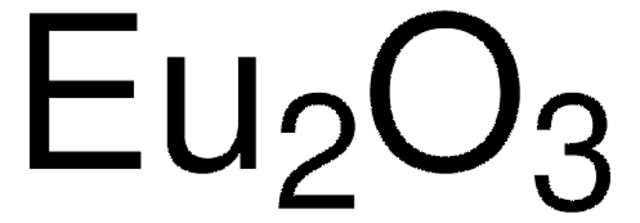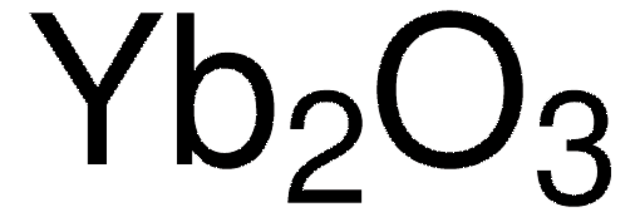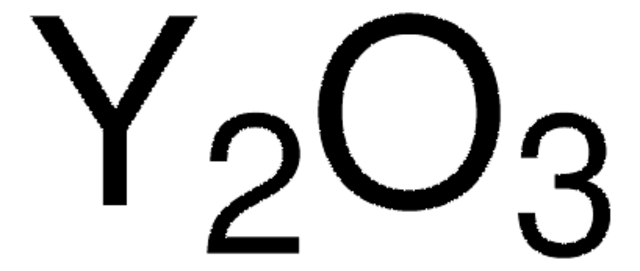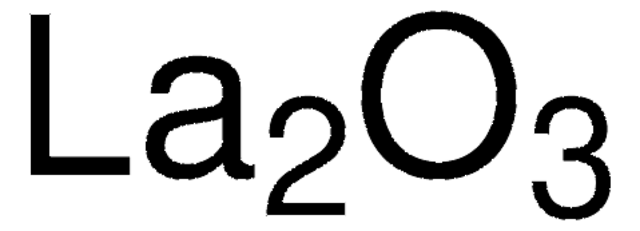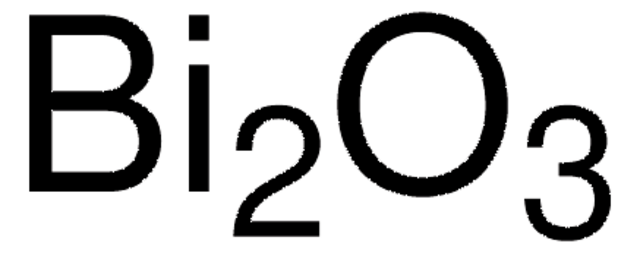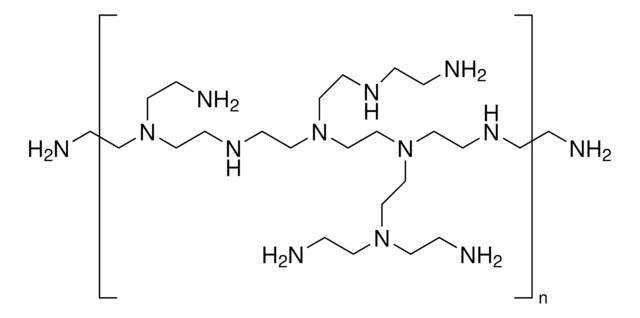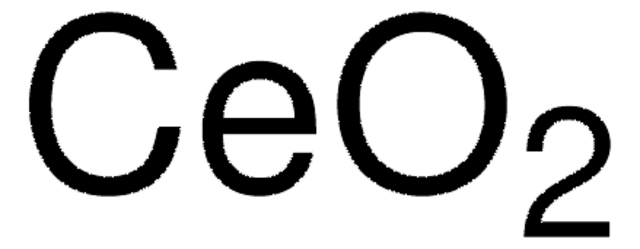637335
Gadolinium(III) oxide
nanopowder, <100 nm particle size (BET), 99.8% trace metals basis
Synonym(s):
Gadolinia, Gadolinium trioxide
About This Item
Recommended Products
Quality Level
assay
99.8% trace metals basis
form
nanopowder
reaction suitability
reagent type: catalyst
core: gadolinium
particle size
<100 nm (BET)
mp
2330 °C (lit.)
density
7.407 g/mL at 20 °C (lit.)
SMILES string
O=[Gd]O[Gd]=O
InChI
1S/2Gd.3O
InChI key
RNYFGGMJZRTZKO-UHFFFAOYSA-N
Looking for similar products? Visit Product Comparison Guide
Related Categories
signalword
Warning
hcodes
pcodes
Hazard Classifications
Eye Irrit. 2
wgk_germany
WGK 1
flash_point_f
Not applicable
flash_point_c
Not applicable
ppe
Eyeshields, Gloves, type N95 (US)
Certificates of Analysis (COA)
Search for Certificates of Analysis (COA) by entering the products Lot/Batch Number. Lot and Batch Numbers can be found on a product’s label following the words ‘Lot’ or ‘Batch’.
Already Own This Product?
Find documentation for the products that you have recently purchased in the Document Library.
Customers Also Viewed
Articles
Advanced Inorganic Materials for Solid State Lighting
Magnetic materials permeate numerous daily activities in our lives. They are essential components of a diversity of products including hard drives that reliably store information on our computers, decorative magnets that keep the shopping list attached to the refrigerator door, electric bicycles that speed our commute to work, as well as wind turbines for conversion of wind energy to electrical power.
Our team of scientists has experience in all areas of research including Life Science, Material Science, Chemical Synthesis, Chromatography, Analytical and many others.
Contact Technical Service